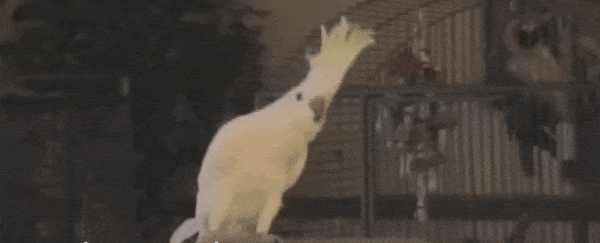In the space of a decade, Snowball the dancing parrot has gone from internet sensation to scientific marvel. The medium sulphur-crested cockatoo (Cacatua galerita eleonora) is not only adorable to watch, the way he busts a move has caused us to stop and rethink the very nature of dance.
'True dancing', as scientists understand it, requires spontaneous movement to a musical beat. The behaviour is present in every single human culture, yet surprisingly few other animals can join us on the dance floor, and that's true even for our closest relatives in the animal kingdom.
In 2013, a sea lion named Ronan became the first non-human mammal known to move with the music, bobbing her head to the Backstreet Boys. But what Snowball can do is even more remarkable.
While Ronan had to be taught her one dance move, Snowball appears to have invented an entire repertoire all on his own. Researchers say this bird can bob, body roll, head bang, rock it side-to-side and even pull off some moves involving several different body parts, as you can watch in the video below.

It all started after Snowball made his first YouTube debut. As the bird was introduced to more and more music, his owner Irena Schultz noticed that her pet was in a period of 'movement exploration'.
"For the first half, Snowball struggled to find a dance that would fit," Schulz, who is also a co-author of a new study on the bird, told The Atlantic, "but about halfway through, he found moves that would work. The more that he was exposed to different music, the more creative he became."
Already fascinated by this bird, a team of neuroscientists decided to study his strange behaviour even more closely. Looking back through footage of Snowball collected in 2008, when the bird was just 12 years old, the researchers identified 14 individual moves and two combinations.
The eighties playlist included Another One Bites the Dust and Girls Just Want to Have Fun, each of which was played for the bird three times for a total of 23 minutes. In both songs, the authors write, there was not a single segment in which all three replays contained the same dance move.
Boogieing away for snippets of three or four seconds, Snowball was even able to change his style along with the tune.
"What's most interesting to us is the sheer diversity of his movements to music," says senior author Aniruddh Patel, a psychologist at Tufts University and Harvard University. And nowhere is Snowball's progression more obvious than when you watch his earlier videos (below).


Parrots are obviously renowned for their ability to copy humans, but there's good reason to think Snowball's new dance moves are beyond simple mimicry. During the trial, no other human was in the room but Schulz, and she did not dance or move rhythmically.
Schulz says when she dances with Snowball at home, she usually just waves her hands and bobs her head.
"During this period of exploration, Snowball seemed to favour movement diversity over synchronisation accuracy," the authors write, "his rhythmic movements often seemed not highly synchronised to the beat, possibly because he was primarily exploring new movements rather than exploiting old ones."
The behaviour has led the team to hypothesise that the cockatoo is partaking in creative social behaviour, interacting with his human 'flock' on a level that goes beyond basic desires and needs.
"This would also be remarkable, as creativity in nonhuman animals has typically been documented in behaviours aimed at obtaining an immediate physical benefit, such as access to food or mating opportunities," the authors conclude.
"Snowball does not dance for food or in order to mate; instead, his dancing appears to be a social behaviour used to interact with human caregivers (his surrogate flock)."
Who knows what dance move he'll make up next.
The research was published in Current Biology.
